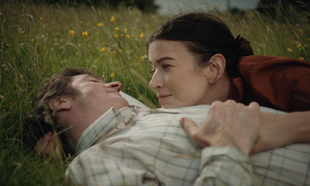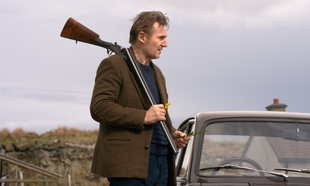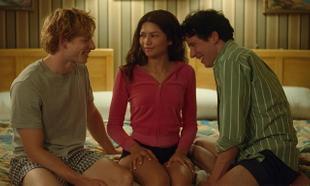A compendium of footage shot by cinematographer Kirsten Johnson over twenty-five years on documentaries such as Fahrenheit 911 and Citizenfour, Cameraperson is a personal journey, or 'memoir' as stated in the opening credits, for Johnson. At first there seems little to link the disparate shots – a shepherd in the Bosnian hills, a soldier in Washington, a boxer in Brooklyn, a storm scene somewhere in the American Midwest, a nurse struggling with limited recourses in a Nigerian hospital – and with little context to go on the images pass by without resonance.
But then something happens.
Like William Hurt's state of confusion when presented with Harvey Keitel's scrapbook of photos of random street scenes in Smoke, it's when he's encouraged by Keitel's photographer to 'keep looking' that Hurt finally gets it. Ditto here. Just as we hear Johnson remark off camera that she should "move through the banal stuff and find something interesting", it's around the forty minute mark when Cameraperson – its theme, the idea, the raison d'etre, the context - slowly begins to take shape.
The relationship between the camera and the subject, and when a documentary maker should interfere with what’s happening in front of the lens becomes the overriding theme. We hear Johnson exclaim when a child picks up a sharp axe and hear her cry when a boy recounts the episode that cost him his eye. At one point a French philosopher discusses the American state of behaving like they are always on camera, while an old Bosnian woman returns home after the atrocities claiming she has no ill will towards those who killed her family, rejecting Johnson’s suggestion that she’s afraid to speak freely with the camera present.
Scenes at Wounded Knee, Tahrir Square, World Trade Center, a Liberian execution site, Guantanamo, and the Taliban give the once easy-going vibe an ominous atmosphere; the opening peaceful scenes with the smiling elderly shepherd in the Bosnian hills later contrasts with the stark visuals from Bosnia 'rape centres' and headquarters for the enforcement of ethnic cleansing. The short scenes, these snippets of existence suddenly become enough to paint a whole life. As these sombre images gather pace, Johnson begins to revisit the images of those initially unconnected opening scenes, giving them not only a conclusion to their stories but also added weight considering the intermediate footage (the Brooklyn boxer preparing for the fight is apoplectic after losing).









































































